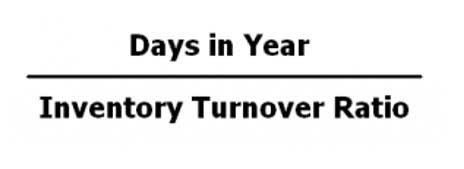
In addition, a company’s assets and liabilities can change at any time because of unforeseen circumstances. We can calculate average total equity by using formula of total equity value at the end of the current year plus total equity value at the end of the previous year and then divide the result by two. Treasury stock reduces total equity as it represents shares repurchased by the company, reducing the overall ownership interest.
- The accounting equation still applies where stated equity on the balance sheet is what is left over when subtracting liabilities from assets, arriving at an estimate of book value.
- This also means that current investors actually own less of the company assets than current creditors.
- Because shareholder equity is equal to a company’s assets minus its debt, ROE could be considered the return on net assets.
- Yes, total equity can change due to various factors, including profits, losses, dividends, asset revaluation, or issuance/repurchase of shares.
- It is the residual interest in the assets of the entity after deducting liabilities, essentially representing the owners’ stake in the company.
Related Terms

Stockholders’ equity is equal to a firm’s total assets minus its total liabilities. An alternative calculation of company equity is the value of share capital and retained earnings less the value of treasury shares. Treasury shares continue to count as issued shares, but they are not considered to be outstanding and are thus not included in dividends or the calculation of earnings per share (EPS). Treasury shares can always be reissued back to stockholders for purchase when companies need to raise more capital.
Average Equity Formula
The total equity on a company’s balance sheet shows the book value, or historical value, of the owners’ stake in a company if all debts were paid off. Total equity equals total assets minus total liabilities and consists of the amount of money investors have invested in the company and the earnings a company has accumulated from its operations. A company with a larger portion of equity how to get total equity compared to liabilities typically has a lower risk of bankruptcy because of its lower debt burden. The information needed to derive total equity can be found on a company’s balance sheet, which is one of its financial statements. The asset line items to be aggregated for the calculation are cash, marketable securities, accounts receivable, prepaid expenses, inventory, fixed assets, goodwill, and other assets.
- A relatively high D/E ratio is commonplace in the banking and financial services sector.
- A particularly low D/E ratio might be a negative sign, suggesting that the company isn’t taking advantage of debt financing and its tax advantages.
- Total Equity provides insight into a company’s net worth and its ability to sustain operations without external support.
- They can also include loan interest, salaries and wages payable, and funds owed to suppliers or utility bills.
- A firm typically can raise capital by issuing debt (in the form of a loan or via bonds) or equity (by selling stock).
- Let us consider another example of a company SDF Ltd to compute the stockholder’s equity.
What Are Short-Term Liabilities?
The left-side value of the equation will always match the right-side value. The total amount of all assets will always equal the sum of liabilities and shareholders’ equity. Let us consider another example of a company SDF Ltd to compute the stockholder’s equity. As per the company’s balance sheet for the financial year ended on March 31, 20XX, the company’s total assets and total liabilities stood at $3,000,000 and $2,200,000, respectively.

What are the Components of Owner’s Equity?
Yes, total equity can change due to various factors, including profits, losses, dividends, asset revaluation, or issuance/repurchase of shares. Total equity represents the cumulative value of ownership in a company, while net income refers to earnings generated during a specific period. Suppose Company B has $5 million in assets but $4.5 million in liabilities. With a low equity base, the company may be struggling with its debt levels, making it harder to secure loans or attract investors. If the company is unable to manage its debts effectively, it may face difficulties in paying interest or principal repayments. A steadily rising D/E ratio may make it harder for a company to obtain financing in the future.
Stockholders’ Equity: What It Is, How to Calculate It, Examples
Similarly, the end-of-period equity is the total equity at the end of the period under consideration. This is also derived from the balance sheet and includes the same components as the initial equity calculation. However, it reflects any changes that have occurred during the period, such as profits earned or losses incurred, dividends paid out, or any new equity financing. This figure demonstrates the company’s ability to grow its equity base over the period.
How To Calculate Liabilities
Total equity, or shareholder equity, is equal to a company’s total assets minus its total liabilities, both of which are documented in an organization’s balance sheet. Whereas the total asset value is the sum of current and noncurrent assets, total liabilities is equal to current liabilities plus long-term liabilities. The accounting equation is based on the premise that the sum of a company’s assets is equal to its total liabilities and shareholders’ equity. Interior Design Bookkeeping It’s a core concept in modern accounting that provides the basis for keeping a company’s books balanced across a given accounting cycle. The accounting equation is a concise expression of the complex, expanded, and multi-item display of a balance sheet.

What Are the Components of Shareholder Equity?
Privately held companies can then seek investors by selling off shares directly in private placements. These private equity investors can include institutions like pension funds, university endowments, insurance companies, or accredited individuals. When making investment decisions, the average total equity is a valuable indicator of a company’s financial resilience and long-term value creation potential. Investors often integrate this metric into their portfolio strategy, using it to identify companies with a solid financial foundation and a track record of maintaining or increasing equity. This can be particularly appealing for value investors who look for opportunities to buy stocks at prices that are below their intrinsic values, as suggested by strong equity positions. The equity multiplier is a financial leverage ratio that measures the amount of a firm’s assets that are financed by its shareholders by comparing total assets with total shareholder’s equity.
- This equation is the basis for the balance sheet, which summarizes a company’s financial position at a specific point in time.
- She holds a Bachelor of Science in Finance degree from Bridgewater State University and helps develop content strategies.
- Owner’s Equity is the residual value of an owner’s claim on the assets of their respective business upon deducting total liabilities.
- Both are important for investors, but they provide different information.
This comparative approach can also highlight industry-specific risks and opportunities that may not cash flow be apparent when examining a company in isolation. Specifically, how about the liabilities and equity side of your balance sheet? It has some important information about the financial health of your business.
